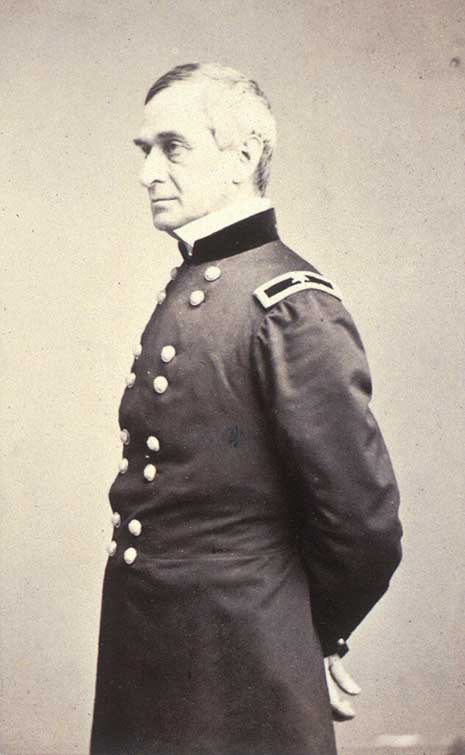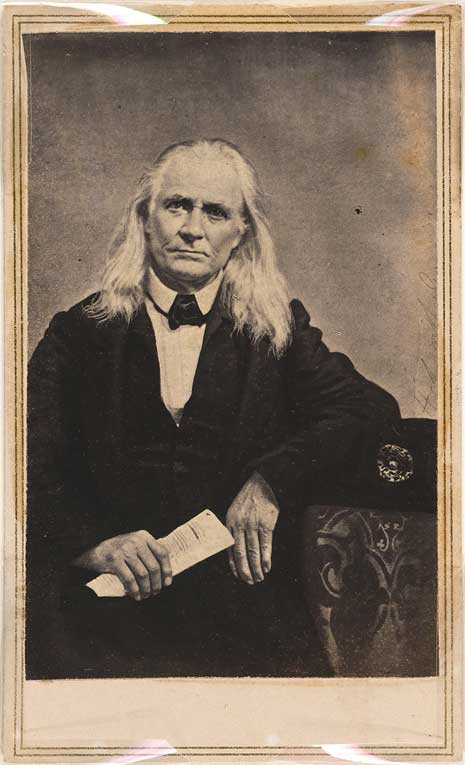The Eve of War: The Moments and Months Leading to the Attack on Fort Sumter
This Tuesday, April 12, marks the 150th anniversary of the attack on Fort Sumter.

The date and the hour are pretty certain. On April 12, 1861, close to 4:30 a.m., after months of escalating tension between the North and the South, a shot was fired across the harbor in Charleston, South Carolina, to the federal contingency occupying Fort Sumter.
Again, that was April 12, 1861. But was that the beginning of the war?
Generally, it is accepted that the hostilities commenced on April 12, 1861, and Charleston harbor and Fort Sumter provided the location for the true beginning of the war—in terms of gunfire, anyway. And while it might be difficult to dispute the location, when the war began is a matter of interest; some historians believe it arrived several months earlier. Union soldiers encamped at Fort Sumter over the winter of 1860–61 were in need of supplies, and a ship, Star of the West, was sent to reinforce the fort. On the approach to the fort, Star of the West was fired upon both from land and from the water; it was unable to complete its mission.
That was January 9, 1861. Was that the beginning of the war?
Historian E. B. Long writes:
The first shots had been fired in Charleston Harbor, and many considered them the first serious shots of the war, though there was actually no war yet. The flag on Star of the West was answered by running up the garrison flag at Fort Sumter. The men manned the parapets, ready for action. Some officers at the fort were incensed that Maj. [Robert] Anderson did not let them fire; there was chagrin that the relief ship had turned away so readily. But the officers varied in their opinions. Anderson did protest to Gov. Pickens the firing of two batteries, Morris Island and Fort Moultrie, upon an unarmed vessel bearing the U.S. flag. Pickens replied that the sending of reinforcements would be considered a hostile act as South Carolina was independent now, and that attack must be repelled. Anderson immediately sent messages north. Charleston itself was in an uproar; it seemed for a moment that real war had come and many people welcomed it. But when it was over Fort Sumter was still in Federal hands and the problem remained much as it had been, only more agitated.
Only one day before, as Long records in The Civil War: Day by Day, “Federal troops fired during the night upon about twenty men who had approached Fort Barrancas.”
That was January 8, 1861. Was that the beginning of the war?
Five years earlier, Massachusetts senator Charles Sumner, in speaking to the Senate on more than one occasion, had passionately and intensely berated the slaveholding South; South Carolina representative Preston Brooks took umbrage. Brooks, using his walking cane, beat Sumner in the United States Senate chamber, putting Sumner out of commission for three years. Years later, General William Emile Doster, a lawyer before the war and later the provost marshal of the District of Columbia military district, wrote of this assault, “Surely the conflict commenced on his [Sumner’s] skull.”
That was May 22, 1856. Was that the beginning of the war?
Who fired the first shot is also disputed.

Unidentified artist / Albumen silver print,
c. 1861 / National Portrait Gallery, Smithsonian
Institution
Union Major Robert Anderson (above) was the officer in charge at Fort Sumter. Having been unable to receive either men or supplies because of the blockade on his fort, Anderson was insufficiently prepared either to withstand a siege any longer or to wage much of a war. Across the harbor from him was General Pierre Gustave Toutant Beauregard (right), in charge of the southern forces in Charleston. When shots were fired in the early morning of April 12, it would be but a matter of hours before Anderson capitulated.
Civil War historian Shelby Foote writes:
Roger Pryor . . . had spoken from a Charleston balcony just two days ago. “Strike a blow!” he had urged the Carolinians. Now when he was offered the honor of firing the first shot, he shook his head, his long hair swaying. “I could not fire the first gun of the war,” he said, his voice as husky with emotion as Anderson’s had been, back on the wharf at the fort. Another Virginian could and would—white-haired Edmund Ruffin, a farm-paper editor and old-line secessionist, sixty-seven years of age. At [4:30 a.m.] he pulled a lanyard; the first shot of the war drew a red parabola against the sky and burst with a glare, outlining the dark pentagon of Fort Sumter.
E. B. Long, however, tells another tale of those early moments of the war:
At 4:30 a.m. the signal shot was fired from the post of Capt. George S. James at Fort Johnson, with other batteries opening according to previous orders. Capt. James gave the order and, probably, one Henry S. Farley actually fired the signal shot that arched in the night sky over Charleston Harbor. Edmund Ruffin (below), Virginia agriculturalist and fiery Confederate, did not, apparently, fire the first real shot, despite the legend. He did fire the first shell from columbiad No. 1 of the iron battery at Cummings Point on Morris Island. The rotation of fire, which was followed, brought this battery into action late. But it matters little; the signal shot did it and the war guns spoke.
No matter who fired the first shot, what is certain is this: the actions that took place on April 12, 1861, were irreversible. Whatever could have been done before Sumter could not be done after, and the events at Sumter could not be undone. Anderson’s defense, while valiant, was futile: he had too little of everything—men, supplies, munitions. The major was only capable of putting up a reasonable defense for a short time, and after about a day and a half, he gave up the fort. April 14, 1861, would see the property at Fort Sumter turned over to the rebel troops under Beauregard.
Armies would begin to assemble at this moment. Other moments may have had doubt attached to them; this one would not. This was war.
—Warren Perry, Catalog of American Portraits, National Portrait Gallery

Cited:
E. B. Long, with Barbara Long, The Civil War Day by Day: An Almanac, 1861–1865 (New York: Da Capo, 1985).
Shelby Foote, The Civil War: A Narrative (New York: Random House, 1958).